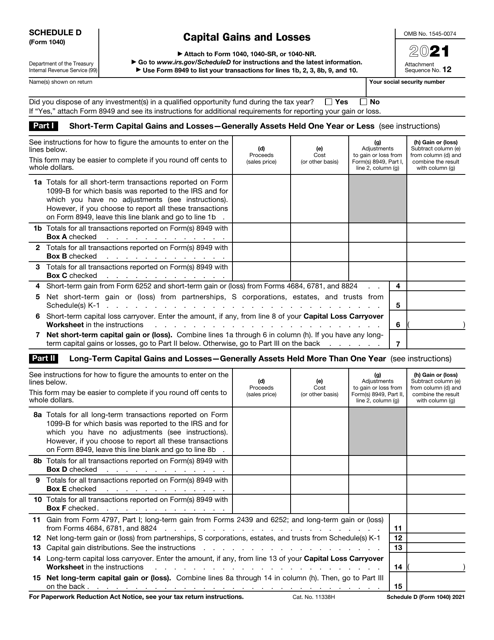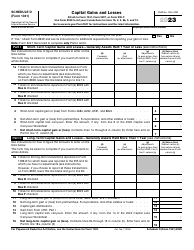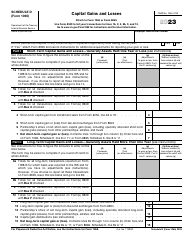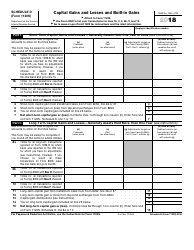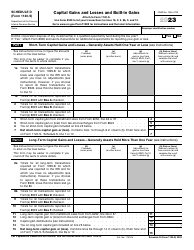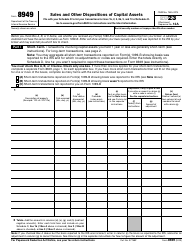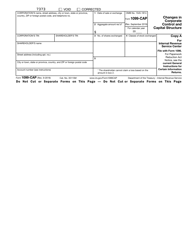This version of the form is not currently in use and is provided for reference only. Download this version of
IRS Form 1040 Schedule D
for the current year.
IRS Form 1040 Schedule D Capital Gains and Losses
What Is IRS Form 1040 Schedule D?
This is a tax form that was released by the Internal Revenue Service (IRS) - a subdivision of the U.S. Department of the Treasury. The document is a supplement to IRS Form 1040, U.S. Individual Income Tax Return. As of today, no separate filing guidelines for the form are provided by the IRS.
FAQ
Q: What is IRS Form 1040 Schedule D?
A: IRS Form 1040 Schedule D is a tax form used to report capital gains and losses from the sale of certain assets.
Q: What are capital gains and losses?
A: Capital gains are the profits made from the sale of investments or assets, while capital losses are the losses incurred from the sale.
Q: What types of assets are reported on Schedule D?
A: Assets such as stocks, bonds, mutual funds, real estate, and certain other investments are reported on Schedule D.
Q: How do I calculate my capital gains or losses?
A: To calculate capital gains or losses, subtract the purchase price of the asset from the selling price. If the result is positive, it is a capital gain, and if it is negative, it is a capital loss.
Q: Do I need to file Schedule D if I didn't have any capital gains or losses?
A: If you did not have any capital gains or losses during the tax year, you may not need to file Schedule D. However, it's always a good idea to consult a tax professional or refer to the IRS guidelines to determine your filing requirements.
Q: When is the deadline to file Schedule D?
A: Schedule D must be filed along with your federal income tax return by the tax filing deadline, which is usually April 15th. However, the deadline may vary in certain situations, so it's best to check with the IRS or a tax professional for the current year's deadline.
Q: What happens if I don't file Schedule D?
A: Failing to file Schedule D when required could result in penalties and interest on any unpaid taxes. It's important to comply with IRS regulations to avoid any consequences.
Q: Do I need to keep records of my capital gains and losses?
A: Yes, it is important to keep records of your capital gains and losses, including purchase and sale documents, as well as any supporting documentation. This will be helpful in case of audits or if you need to amend your tax return in the future.
Form Details:
- A 2-page form available for download in PDF;
- This form cannot be used to file taxes for the current year. Choose a more recent version to file for the current tax year;
- Editable, printable, and free;
- Fill out the form in our online filing application.
Download a fillable version of IRS Form 1040 Schedule D through the link below or browse more documents in our library of IRS Forms.
